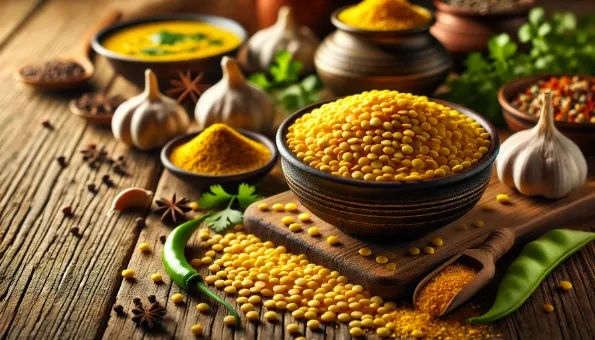Toor Dal: Nutrition, Benefits, and Culinary Uses
Toor dal, also known as pigeon peas, is a staple legume in Indian cuisine, rich in protein, fiber, and essential minerals.

Introduction
Toor dal (Cajanus cajan), also called pigeon peas, is a legume native to India. It is widely used in curries, soups, and stews. With its mild nutty flavor and creamy texture, it is a staple in many Asian households.
Nutritional Values (per 100 g)
| Nutrient | Amount |
|------------------|---------|
| Energy | 343 kcal|
| Carbohydrates | 62 g |
| Protein | 22 g |
| Fat | 1.5 g |
| Fiber | 15 g |
| Iron | 5 mg |
| Magnesium | 183 mg |
| B Vitamins | significant amounts |
Benefits
- High in **protein**, ideal for vegetarians
- Fiber supports healthy digestion
- Low glycemic index helps control blood sugar levels
- Rich in minerals like magnesium and iron for heart and blood health
Possible Drawbacks
- May cause bloating in sensitive individuals
- Contains antinutrients (phytates) which reduce with proper cooking and soaking
- Excess consumption may lead to digestive discomfort
Culinary Uses
Commonly used in Indian **dal curry**, soups, stews, and as a side dish with rice. Pairs well with spices such as turmeric, cumin, and coriander.
Fun Fact
Toor dal is a key crop in dry regions due to its drought tolerance and ability to fix nitrogen in the soil.
- 1. Toor Dal
golubiji grašak (split), osnovna indijska mahunarka bogata proteinima i vlaknima

